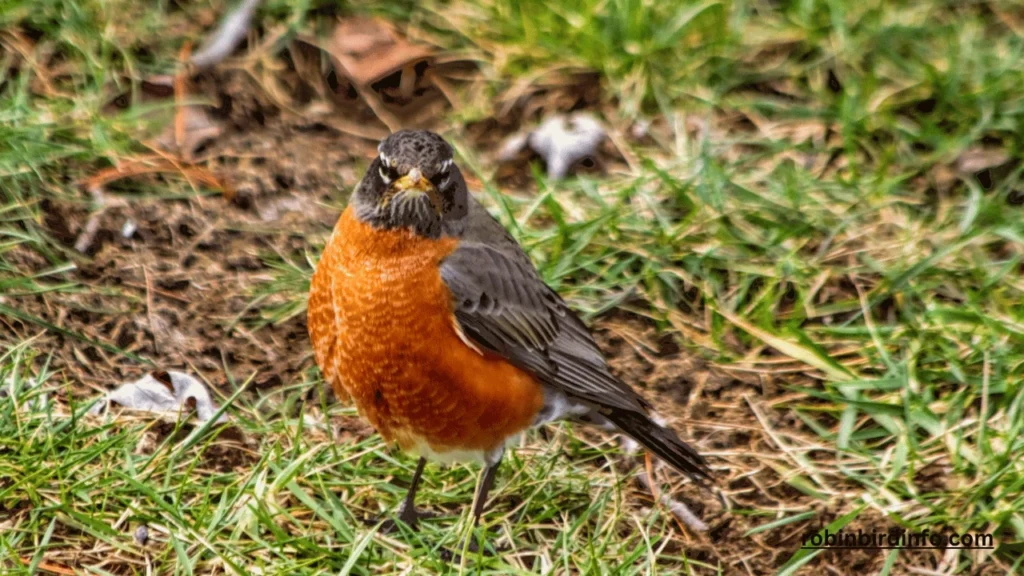Have you ever watched a robin flitting from branch to branch, its cheerful song filling the air?
These seemingly peaceful birds might surprise you. Robins are capable of impressive bursts of speed, a hidden talent crucial for their survival and a fascinating glimpse into their complex lives.
Imagine this: You’re enjoying a quiet morning on your patio when a flash of red streaks across the yard. A robin, feathers ruffled in fury, chases another bird off its territory.
This seemingly harmless songbird is displaying a surprising athleticism, proving that speed plays a vital role in their daily lives beyond just aesthetics.
Understanding how fast a robin can fly goes beyond mere curiosity. It’s a window into their struggle for survival. This speed fuels their daring migrations, allows them to escape predators, and even helps them secure the best nesting sites. So, the next time you see a robin in your backyard, remember, there’s more to this common bird than meets the eye.
This seemingly ordinary creature possesses a hidden talent for speed, a key ingredient in their remarkable story.
Contents
Section 1: Factors Affecting Flight Speed
Wing Shape and Size: A Robin’s wings are adapted for both soaring and flapping flight. Their wings are relatively short and rounded, which allows for excellent maneuverability but may limit their top speed.
Muscle Power: Powerful flight muscles are essential for sustained flight. Robins have well-developed flight muscles that enable them to flap their wings rapidly and generate the necessary lift and thrust.
Air Resistance: Air resistance can slow down a bird’s flight. Robins minimize air resistance by streamlining their bodies and tucking their legs and feet under their bodies during flight.
Section 2: Robin Flight Speeds
Normal Flight Speed: The typical cruising speed of a Robin during routine flight is around 20-30 miles per hour.
Maximum Flight Speed: During short bursts of speed, such as escaping predators or catching insects, Robins can reach speeds of up to 40 miles per hour.
Migration Flight Speed: The flight speed of migrating Robins can vary depending on factors like wind conditions and the distance to be covered. On average, migrating Robins can fly at speeds of around 25-35 miles per hour.
Section 3: The Physiology of Bird Flight
Wing Muscles: Robins have powerful flight muscles, including the pectoralis major and minor, which are responsible for powering the downstroke and upstroke of the wings.
Respiratory System: Birds have a unique respiratory system that allows them to extract oxygen efficiently from the air. This efficient respiratory system helps to supply the muscles with oxygen during flight.
Circulatory System: Birds have a highly efficient circulatory system that delivers oxygen-rich blood to the muscles. This helps to sustain high levels of activity during flight.
Section 4: The Challenges of Migration
Weather Conditions: Weather conditions, such as wind speed and direction, can significantly impact the speed and efficiency of Robin migration. Strong headwinds can slow down their progress, while tailwinds can help to accelerate their flight.
Energy Requirements: Long-distance migration requires a significant amount of energy. Robins must fuel their journeys by consuming large quantities of food, such as insects and berries.
Navigation: Robins use a combination of navigational cues, including the position of the sun, stars, and Earth’s magnetic field, to find their way during migration.
Section 5: Conservation Implications

Habitat Loss and Fragmentation: Habitat loss and fragmentation can impact Robin migration by reducing the availability of suitable stopover sites and breeding grounds.
Climate Change: Climate change can alter migration patterns and disrupt the timing of breeding seasons, affecting Robin populations.
Conservation Strategies: To protect Robin populations, it is important to conserve their habitats, reduce pesticide use, and create bird-friendly landscapes.
Conclusion
Robins are remarkable birds with impressive flight capabilities. By understanding the factors that influence their flight speed and the challenges they face during migration, we can appreciate their remarkable adaptations and the importance of protecting their habitats.
FAQ’s
How fast can a Robin fly?
The typical cruising speed of a Robin is around 20-30 miles per hour. However, they can reach speeds of up to 40 miles per hour during short bursts of energy.
Can Robins fly long distances?
Yes, Robins are capable of flying long distances, especially during migration. Some populations migrate hundreds of miles to reach their wintering grounds.
Robins use a combination of navigational cues, including the position of the sun, stars, and Earth’s magnetic field, to find their way during migration.
What factors affect Robin flight speed?
Factors that affect Robin flight speed include wing shape, muscle power, air resistance, weather conditions, and the bird’s overall health and energy level.
Do Robins flap their wings continuously during flight?
No, Robins can both flap their wings and soar. Soaring allows them to conserve energy during long-distance flights.
How high can Robins fly?
Robins can fly at relatively high altitudes, especially during migration. They may fly at altitudes of several thousand feet.








